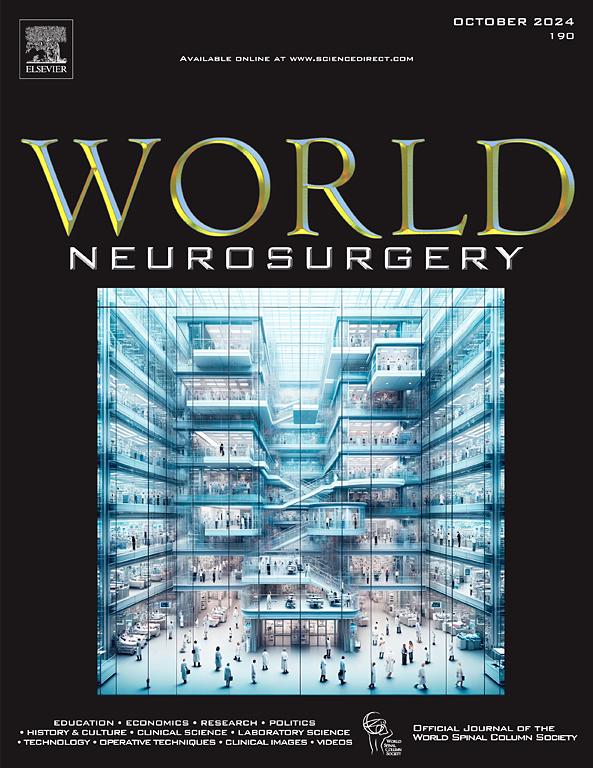原始胶质母细胞瘤的再生和脑转移的合成数据研究结果。
IF 1.9
4区 医学
Q3 CLINICAL NEUROLOGY
引用次数: 0
摘要
目的:合成数据(SD)是人工生成的信息,模仿真实数据的统计特征和相关性,使研究人员能够模拟在日常实践中难以获得的变量,同时克服保密障碍。本研究旨在评估SD在胶质母细胞瘤(GBM)和脑转移瘤(BM)研究中的实用性、有效性和潜在局限性。方法:选择3篇已发表的神经肿瘤学研究,重点关注预后因素:2篇涉及GBM患者,1篇涉及BM患者。这些研究使用MDClone平台进行复制,该平台是一种医疗保健数据探索工具,可以创建SD。根据需要,使用汇总统计、正态性检验和t检验比较患者人口学和结果变量的真实值和标准差。结果:SD共产生GBM患者452例,BM患者1320例。在GBM患者中,较长的中位总生存期与较年轻的年龄相关(70岁:8.8 [95%CI 7.4-10.2], P40: 16.2 [95%CI 13.4 - 19.1])。结论:将SD整合到临床研究中有可能在不损害患者隐私的情况下提供准确的预测性见解。本文章由计算机程序翻译,如有差异,请以英文原文为准。
Reproduction of Original Glioblastoma and Brain Metastasis Research Findings Using Synthetic Data
Objective
Synthetic data (SD) is artificially generated information that mimics the statistical characteristics and correlations of real-world data, enabling researchers to simulate variables that are challenging to obtain in routine practice while overcoming confidentiality barriers. This study aims to evaluate the utility, validity, and potential limitations of SD in glioblastoma (GBM) and brain metastases (BM) research.
Methods
Three published neuro-oncology studies focusing on prognostic factors were selected: 2 involving GBM patients and 1 with BM patients. These studies were replicated using the MDClone platform, a healthcare data exploration tool that enables the creation of SD. Real-world data and SD were compared across patient demographic and outcome variables using summary statistics, normality testing, and t-test as required.
Results
452 GBM patients and 1320 BM patients were generated with SD. Among GBM patients, longer median overall survival was associated with younger age (age<50: 16.3 months [95% CI: 12.8–19.8]; age 50–59: 15.6 [95% CI: 13.1–18.1]; age 60–69: 13.9 [95% CI: 12.1–15.7]; age>70: 8.8 [95% CI: 7.4–10.2], P < 0.001), greater extent of resection (debulking: 16.8 months [95% CI 14.9–18.7] vs. biopsy: 10.9 months [95% CI: 9.6–12.3], P < 0.001), and higher serum albumin (sAlb) (sAlb<30 g/L: 7.0 months [95% CI: 4.8–9.3]; sAlb 30–40 g/L: 12.9 [95% CI: 11.6–14.1]; sAlb>40: 16.2 [95% CI: 13.4–19.1], P < 0.05). Among BM patients, lower systemic inflammation scores (neutrophil-lymphocyte-ratio, leukocyte-lymphocyte-ratio, platelet-lymphocyte-ratio, monocyte-lymphocyte-ratio, and C-reactive-protein/albumin-ratio) were associated with longer overall survival (P < 0.05). These results aligned with the findings reported in the literature.
Conclusions
Integrating SD into clinical research offers potential for providing accurate predictive insights without compromising patient privacy.
求助全文
通过发布文献求助,成功后即可免费获取论文全文。
去求助
来源期刊

World neurosurgery
CLINICAL NEUROLOGY-SURGERY
CiteScore
3.90
自引率
15.00%
发文量
1765
审稿时长
47 days
期刊介绍:
World Neurosurgery has an open access mirror journal World Neurosurgery: X, sharing the same aims and scope, editorial team, submission system and rigorous peer review.
The journal''s mission is to:
-To provide a first-class international forum and a 2-way conduit for dialogue that is relevant to neurosurgeons and providers who care for neurosurgery patients. The categories of the exchanged information include clinical and basic science, as well as global information that provide social, political, educational, economic, cultural or societal insights and knowledge that are of significance and relevance to worldwide neurosurgery patient care.
-To act as a primary intellectual catalyst for the stimulation of creativity, the creation of new knowledge, and the enhancement of quality neurosurgical care worldwide.
-To provide a forum for communication that enriches the lives of all neurosurgeons and their colleagues; and, in so doing, enriches the lives of their patients.
Topics to be addressed in World Neurosurgery include: EDUCATION, ECONOMICS, RESEARCH, POLITICS, HISTORY, CULTURE, CLINICAL SCIENCE, LABORATORY SCIENCE, TECHNOLOGY, OPERATIVE TECHNIQUES, CLINICAL IMAGES, VIDEOS
 求助内容:
求助内容: 应助结果提醒方式:
应助结果提醒方式:


